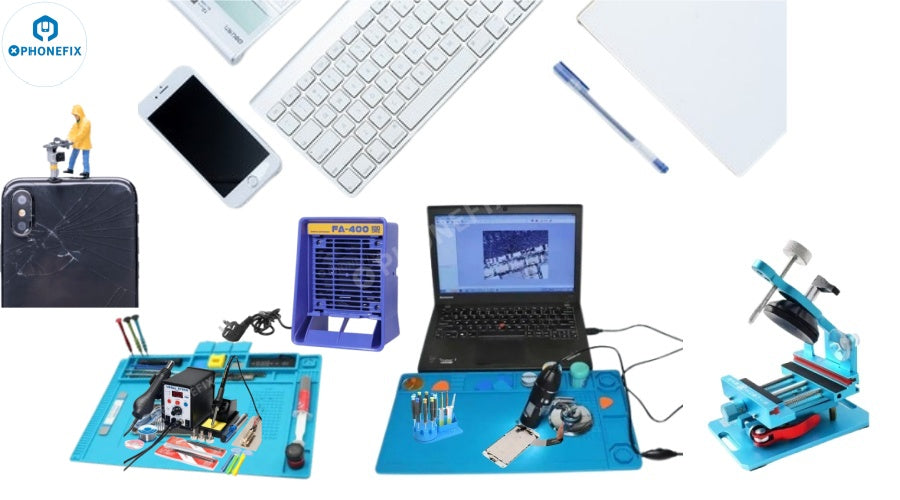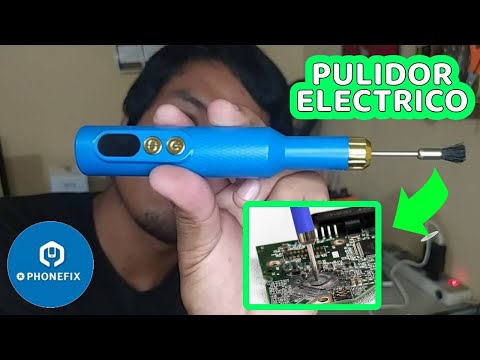In the wonderful world of mobile phone repair, hand tools are like a magician's wand, and are the key to every repairman's repair journey. Although they seem ordinary, they contain huge energy and can turn decay into magic, giving a broken mobile phone a new life. Today, let us walk into the mysterious hall of Professional Hand Tools that are essential for mobile phone repair.
The number of hand tools needed to repair a cell phone depends on the complexity of the repair and the model of the phone. Generally speaking, a complete cell phone repair tool kit should contain at least 10 to 12 key hand tools. 
Welding tools play a vital role in mobile phone repair. When the repair work involves circuit boards or electronic components, it becomes an indispensable "weapon". Whether it is connecting new electronic components or replacing faulty components, welding tools can play a key role. It is like a bridge.
Through precise welding operations, a stable and reliable connection is established between the circuit board and the electronic components to ensure the normal operation of the mobile phone circuit and make the mobile phone revitalized.
Hot Air Gun: Used to disassemble and solder chip integrated circuits.
Disassembly: By blowing out high-temperature airflow to melt solder, it can be used to disassemble chips (such as processors, power management chips, etc.) and small components (capacitors, resistors, etc.) on the mobile phone motherboard, and can avoid damaging the motherboard circuit.
Screen repair: used to soften the glue connecting the screen and the body, facilitate the disassembly and installation of the screen, reduce the risk of screen cracking and body deformation, and assist in the curing of the glue.
Moisture repair: For damp mobile phones, blow dry the internal components at a lower temperature and appropriate wind speed, but pay attention to controlling the temperature and time to ensure that the moisture is completely evaporated and the components are not damaged.
Soldering Station: Used to repair the pins of chip integrated circuits and clean the residual tin.
Component operation: Used to replace damaged components (such as resistors, capacitors, chips, etc.) and deal with cold soldering problems, ensure that the components are firmly connected to the motherboard, and repair abnormal functions.
Line repair: Repair lines, cable connectors or solder joints damaged by external forces to ensure stable signal transmission.
Improve quality and efficiency: The temperature can be adjusted to accurately control the temperature according to the needs of the components to avoid damage or loose welding; the heating is fast and stable, reducing waiting and mistakes, and improving maintenance efficiency.
Battery Tester: This tool is used to diagnose power problems and ensure that the battery is working properly.
Performance evaluation: Measure the capacity and internal resistance of the mobile phone battery to determine the battery aging and performance degradation, such as a significant decrease in capacity or excessive internal resistance.
Fault diagnosis: Assist in determining whether the failure of the mobile phone to turn on or automatically shut down is due to battery problems, and distinguish the source of the fault by detecting voltage and current parameters.
Quality inspection: Inspect the quality of new batteries to ensure that parameters such as capacity and voltage meet the standards, and ensure the performance and user experience of the mobile phone after repair.
Magnifying Glasses and Microscopes: They play an important role in mobile phone repair. They can help repairers clearly observe details on tiny components such as mobile phone motherboards and chips, such as tiny solder joints, fine cracks in circuits, component identification, etc., so as to accurately locate faults and improve the accuracy and success rate of repairs.
Precision Screwdriver Set:
The screws used inside phones come in many different types and sizes, including Phillips and Torx screws. Having the right screwdriver set is essential when repairing a phone. It’s like a precise key that allows the repairer to open the device without causing any damage, laying a good foundation for subsequent repair work.
Related Tools:
Pry Bars: These tools are used to safely separate components such as LCD screens to prevent scratches and damage during disassembly.
Tweezers: Fine-tipped tweezers are used to handle small components and screws to ensure the precision of repairs.
Suction Cups: This tool is used to lift the screen without damaging it, especially in devices with bonded displays.
Magnetic Pads: Keep small screws and components in order during repairs to prevent parts from being lost
Anti-static Brushes: Used to clean internal components without damaging sensitive electronic devices.
Plastic Triangular Pry Bars: Help pry open devices without scratching the surface.
LCD Tester: Used to diagnose display problems such as dead pixels or touch response problems.
Multimeter: Although not always considered a hand tool, it is very valuable when diagnosing electrical problems inside a device.
These essential hand tools for mobile phone repair are like keys to open the door to mobile phone repair. Each of them plays a key role in the repair process. They work together to form a solid foundation in the field of mobile phone repair, allowing repairers to be like magicians and make Broken Mobile Phones Shine again.
If you need them, you can come to phonefix to buy these products. Phonefix is known for its high-quality products and professional services. Here you can find high-quality and complete mobile phone repair tools to provide strong support for your mobile phone repair work or hobbies, so that you can go smoothly on the road of mobile phone repair and start your own repair journey.












